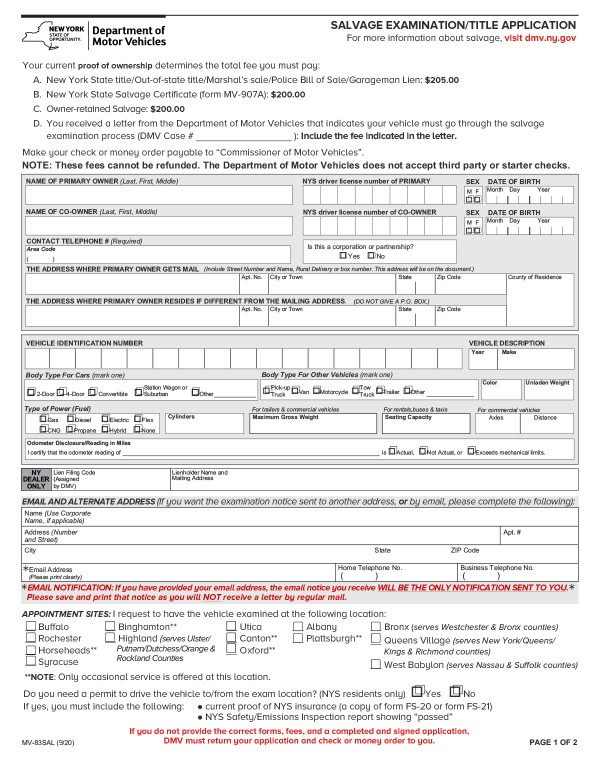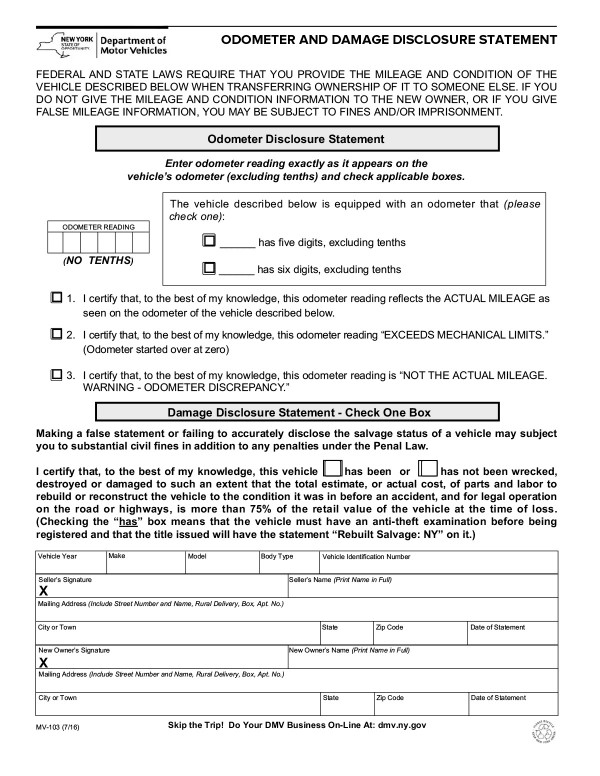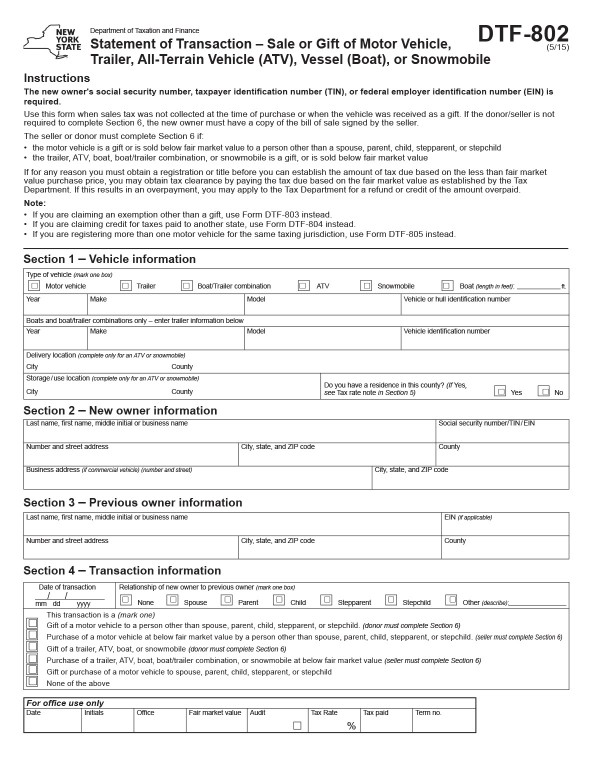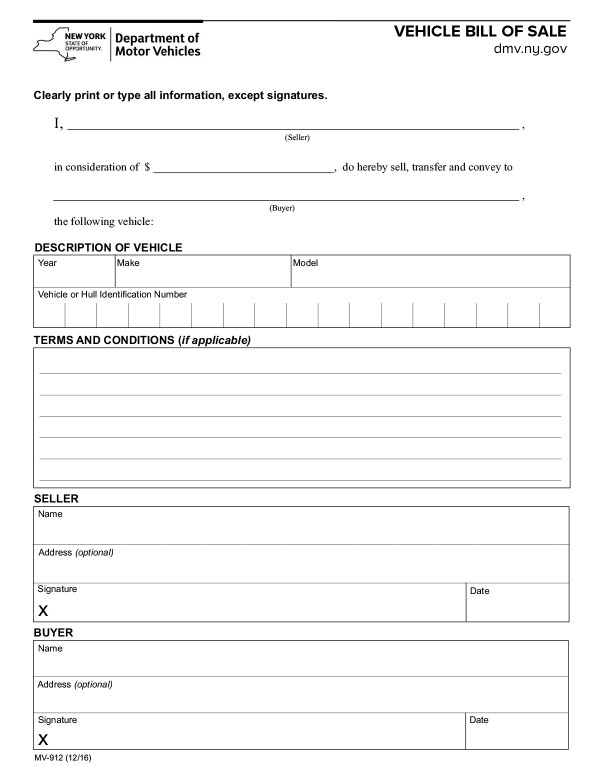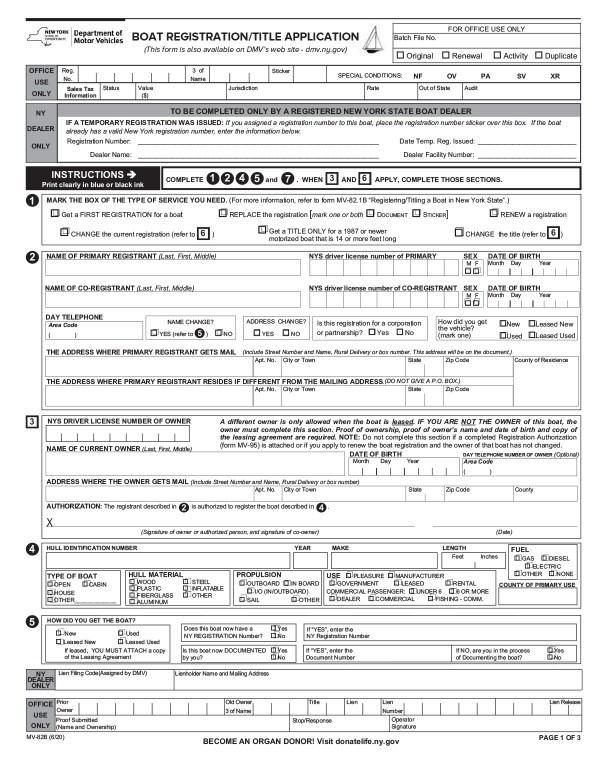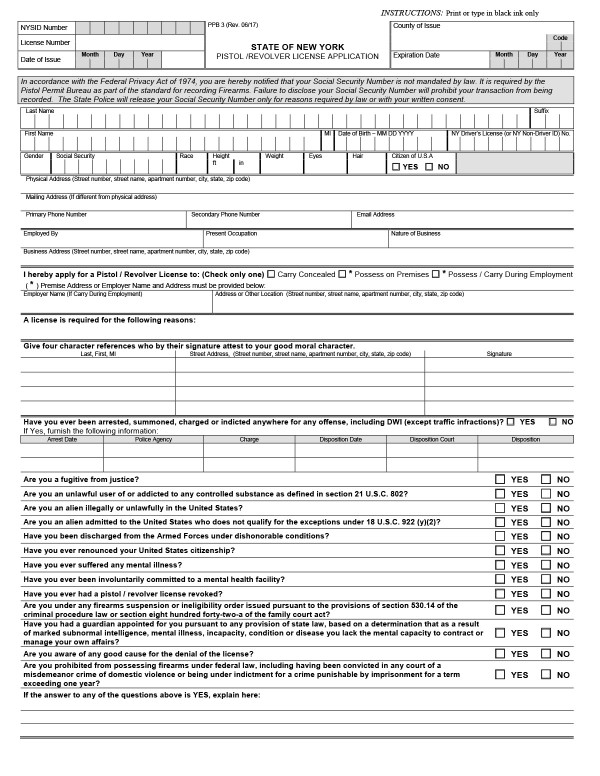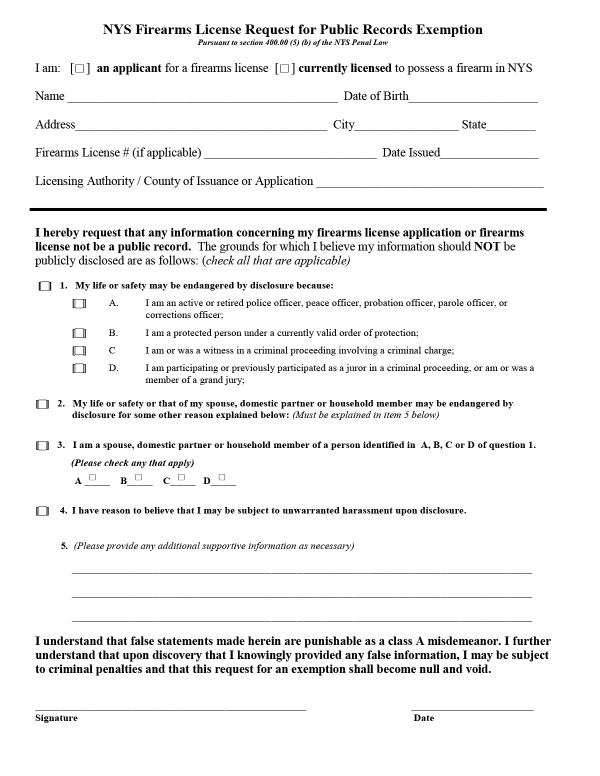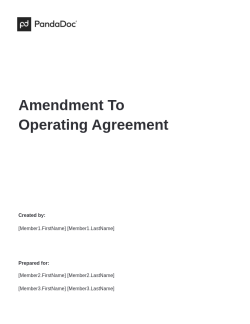Important Terms for a Bill of Sale
- Seller: This section includes the name, address, and contact information for the primary seller and any additional sellers.
- Buyer: This section lists the name and information for the primary buyer and any additional buyers.
- Description: This section includes identifying information like visual descriptives, serial numbers, item makes and models, the condition of the item being sold, and so on.
- Terms and Conditions: In this section, the buyer and seller can document any mutual agreements in relation to the sale. Examples include warranties or agreements for the buyer to accept the item as-is.
- As-is: A bill of sale marked “as-is” means that the buyer accepts the item in its current condition.
1. New York Bill of Sale Requirements
In the state of New York, a bill of sale is required whenever you buy or sell a motor vehicle or boat. Drafting a bill of sale is also a good standard practice when you buy or sell other valuable items.
Why Use a Bill of Sale?
Beyond helping you fulfill specific legal requirements, a bill of sale also verifies an item’s transfer of ownership. It proves that the buyer now owns the item and can absolve the seller of responsibility for the item’s use after the sale.
Additional Considerations
Language Requirements
You are free to draft your bill of sale in any language but you will need to translate it into English if you intend to use it as evidence in a legal dispute. In the state of New York, a notary public must sign a translated document to verify the translation’s accuracy. To avoid this extra step, you may choose to complete the original document in English.
Number of Copies
For any bill of sale, you need at least one copy for the seller and at least one for the buyer. If you are buying or selling a car or boat, you need to furnish the Department of Motor Vehicles (DMV) with a copy, so there will need to be at least three copies in total. Buyers and sellers may choose to make additional copies for personal attorneys or accountants.
Junk Vehicles
By New York state law, a rebuilt salvage (junk) vehicle may be registered and titled for roadway use if it passes a salvage vehicle examination. This examination exists primarily to protect consumers and to identify stolen cars or parts. Any title received after the salvage examination will bear the branding of “rebuilt salvage,” except for those cars rebuilt before May 18, 1999.
When you sell a rebuilt salvage vehicle in New York, you must disclose the vehicle’s history. The disclosure is located on the back of the Certificate of Title. To be valid as a disclosure, it must include the buyer’s and seller’s signatures. Alternatively, you may complete the Odometer and Damage Disclosure Statement, MV-103.
This form does not legally verify a transfer of ownership. For that, you need a bill of sale.
After Purchasing a Vehicle
Whenever you purchase or sell a vehicle privately in New York, you must complete a bill of sale. This is part of the official transfer of ownership.
If You’re the Seller
To transfer ownership of your car in New York, you need to do the following:
- Sign a bill of sale
- Complete and sign the title certificate’s transfer ownership section
- Complete the Odometer Disclosure Statement on the title if the vehicle is no more than 10 model years old
- Complete the Damage Disclosure Statement on the back of the title
- Complete the Statement of Transaction, DTF-802, for the New York State Department of Taxation and Finance
You must complete a bill of sale and Statement of Transaction even if you are gifting the car to another person. If that is the case, indicate $0 as the purchase price.
Also, the state of New York does not allow you to transfer ownership using a title that another person previously transferred to you. You must apply for a new title in your name and transfer that title instead. Titles must be notarized if they come from certain specific states.
If You’re the Buyer
Any person buying or accepting a car in New York must:
- Sign the bill of sale
- Pay sales tax or present proof of exemption
- Register and title the vehicle
You may complete a new registration or transfer the registration from a vehicle that you currently own. If you choose to transfer registration, the original vehicle will no longer be registered.
2. New York Car (Vehicle) Bill of Sale
New York requires that you complete a bill of sale whenever you buy or sell a car privately. You may use the Vehicle Bill of Sale created by the Department of Motor Vehicles or draft your own. In either case, the bill of sale should include:
- Purchase date and price
- Names and signatures of buyer and seller
- Year and make of the vehicle
- Vehicle identification number (VIN)
The buyer must submit the original bill of sale to the DMV along with the transferred title. The buyer and seller may keep copies for their records.
3. New York Boat Bill of Sale
In New York, you must title and register any boat that is motorized and not exempt. You must provide a bill of sale if you are registering your boat for the first time. A boat bill of sale should include:
- Purchase date and price
- Names and signatures of buyer and seller
- Year and make of the boat
- Hull identification number (HIN)
The DMV’s Vehicle Bill of Sale is valid for boats, but again, you have the option to draft your own document.
4. New York Firearm Bill of Sale
New York requires a background check for all private handgun, shotgun, or rifle sales unless the sale is between spouses, domestic partners, parents and children, or stepparents and stepchildren. A licensed dealer must facilitate the background check and may charge up to $10 to do so.
If you are buying a handgun and live outside of New York City, you will need to apply for a state license through your county licensing officer. The process typically takes four months or more and is available to adults age 21 and older who have no prior serious criminal offenses or felony convictions.
A bill of sale is not mandatory when buying or selling a firearm in New York. However, considering state requirements for background checks and licensing, it’s good practice to complete a bill of sale to verify that you have taken all required steps and protect both buyer and seller from liability once a weapon’s ownership has been transferred.
5. New York General Bill of Sale
A general bill of sale documents the transfer of ownership for any non-regulated property. It should include all information that identifies the buyer, seller, item, and transaction, such as:
- Purchase price
- Date of transfer
- Signatures
- Description of the item and its condition
- Buyer and seller contact information


